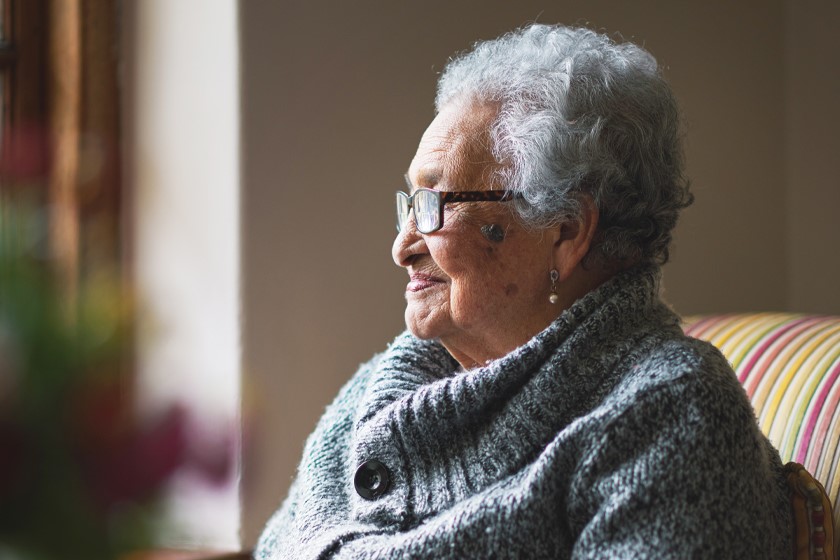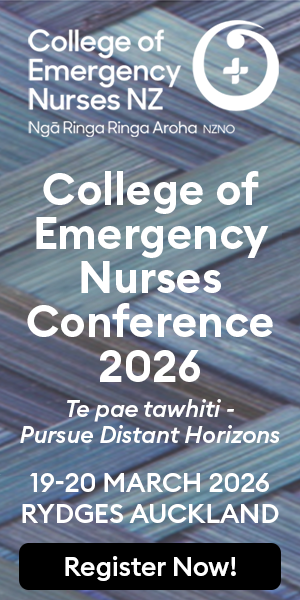The growing challenge
As healthcare professionals at the frontline of patient care, nurses are witnessing a notable demographic shift in New Zealand. By 2028, the number of adults aged 65 years or older is projected to reach one million, representing a nearly 20 per cent increase from 2022.1 This shift, combined with policies promoting “ageing in place,” has made living alone a viable option for older adults.2,3 According to a study on the living arrangements of older New Zealanders residing in their own homes, nearly half lived alone.4
Living alone as a risk to independence
In your daily duties, you may encounter many community-dwelling older adults living alone — some due to bereavement or relationship break-up, while for others it is a conscious choice, preferring the additional personal autonomy.2 Irrespective of the reason, older adults living in single-person households are vulnerable to the physical realities of ageing,5 and the risk of future acute medical events due to increasing frailty and chronic health conditions.
Your clinical experience likely confirms what the data shows: older age and living alone are risk factors for fall-related injuries among New Zealanders aged ≥65 years.6 These injuries can have cascading effects, from death to loss of function, disability and hospitalisation⁶, which can compromise independence for older adults.
“Accessing help faster and instilling the confidence to live independently are recognised benefits of personal medical alarms.”8
Being prepared is linked to maintaining independence
Seniors value their independence and want to remain living in their communities.7 A series of recent interviews with community-dwelling older adults aged ≥65 years across New Zealand (most living alone) identified ‘age-specific preparedness’ as a strategy for maintaining independence and wellbeing.5 These individuals were particularly concerned about health decline and anticipating future support needs.
Many of those interviewed recognised that supportive technologies could help maintain their independence.5 Medical alarms were highlighted as an important intervention for mitigating the risks of acute medical events such as a heart attack or stroke within the context of the day-to-day management of independence. Accessing help faster and instilling the confidence to live independently are recognised benefits of personal medical alarms.8
How nurses can help those living alone to manage their independence
Older adults should be supported to live in their own homes, so they can maintain their independence and connections to the community.9 Research shows that older adults residing alone in the community are taking steps to prepare for personal health emergencies as a means to maintain their independence.5 This presents an opportunity for nurses to recommend enablers of early intervention such as a personal medical alarm.
As seniors who live alone at home are more vulnerable to the adverse consequences of ill health,5 nurses are well placed to identify older patients who might need extra assistance. In general practice, patient records can help identify individuals who live alone.10 Additionally, assessing the health risks of older patients or checking their well-being and social functioning can create an opportunity to ask about their living arrangements (eg, “Do you live alone?”).
Supporting your older patients who live alone
Once you have identified older patients who live alone, you can enhance their health preparedness by recommending a St John Medical Alarm. This device connects directly to Hato Hone St John and provides 24/7 access to expert care.
A St John Medical Alarm will offer your patients reassurance and the confidence to live independently, knowing that immediate help is merely a button press away in the event of an acute medical event in the future. This also helps to ensure an enhanced sense of security for them, knowing they are never truly alone.
All patients are eligible for a free trial, and all it takes is for you to make a simple referral on their behalf, through your Practice Management System via Healthlink or ERMS, or online via stjohnalarms.org.nz/hcp
Full details are available at: stjohnalarms.org.nz/hcp
References
- Stats NZ. (2022). One million people aged 65+ by 2028 [press release].
- Koopman-Boyden, P., & Moosa, S. (2014). Living alone as a lifestyle of older people in New Zealand: policy implications. Policy Quarterly, 10(3), 54-9.
- Davey, J. (2006). “Ageing in Place”: The views of older homeowners on maintenance, renovation and adaptation. Social Policy Journal of New Zealand, 27, 128-41.
- Jamieson, H. A., Gibson, H. M., Abey-Nesbit, R., Ahuriri-Driscoll, A., Keeling, S., & Schluter, P. J. (2018). Profile of ethnicity, living arrangements and loneliness amongst older adults in Aotearoa New Zealand: A national cross-sectional study. Australasian Journal on Ageing, 37(1), 68-73.
- Tuohy, R., & Stephens, C. (2016). Older adults’ meanings of preparedness: a New Zealand perspective. Ageing and Society, 36(3), 613-30.
- Abey-Nesbit, R., Schluter, P. J., Wilkinson, T. J., Thwaites, J. H., Berry, S. D., Allore, H., & Jamieson, H. A. (2021). Risk factors for injuries in New Zealand older adults with complex needs: a national population retrospective study. BMC Geriatrics, 21(1), 630.
- Associate Minister of Health. (2016). Healthy ageing strategy. Ministry of Health.
- Stokke R. (2016). The personal emergency response system as a technology innovation in primary health care services: An integrative review. Journal of Medical Internet Research, 18(7), e187.
- Office for Senior Citizens. (2015). 2014 Report on the Positive Ageing Strategy.
- Dreyer, K., Steventon, A., Fisher, R., & Deeny, S. R. (2018). The association between living alone and health care utilisation in older adults: A retrospective cohort study of electronic health records from a London general practice. BMC Geriatrics, 18(1), 269.




